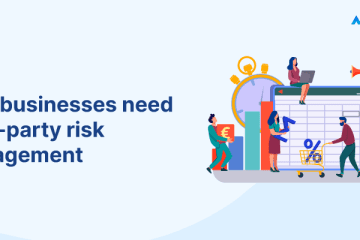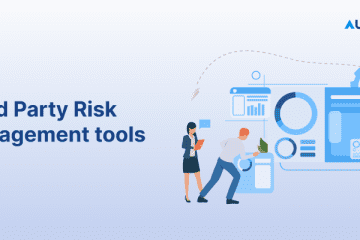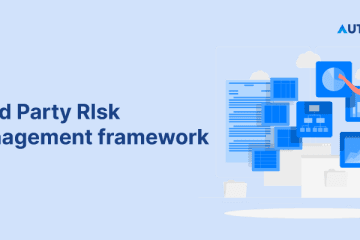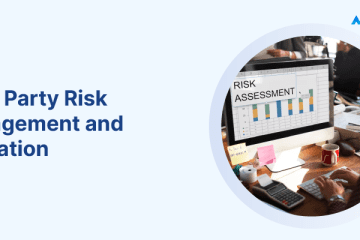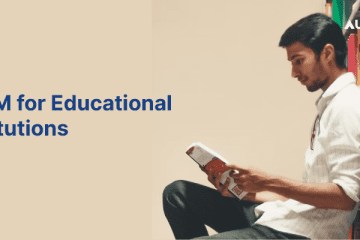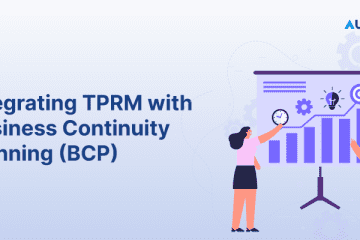The Importance of Third-Party Risk Management
In an era where business operations are increasingly outsourced and interconnected, the significance of third-party risk management (TPRM) has surged to the forefront for companies in India. TPRM is not just a regulatory checkbox but a strategic imperative to safeguard against financial loss, reputational damage, and operational disruptions. This comprehensive guide dives deep into the realms of TPRM, outlining its necessity, components, and execution strategies tailored for the Indian market.
Evolving Regulatory Landscape in India
India’s business environment is characterized by a rapidly evolving regulatory landscape. The introduction of stringent regulations such as the Personal Data Protection Bill, amendments in IT laws, and compliance requirements for financial operations mandates businesses to reassess their third-party engagements. This section will elucidate how these regulatory changes underscore the need for robust TPRM.
Escalating Cyber Threats and Data Breaches
The Indian regulatory environment has seen substantial reforms in recent years, directly impacting how businesses manage their third-party relationships. For instance, the Personal Data Protection Bill, inspired by GDPR, imposes strict guidelines on data handling and privacy, necessitating businesses to ensure their vendors and partners comply with these norms to avoid hefty penalties.
Moreover, the Reserve Bank of India (RBI) and the Securities and Exchange Board of India (SEBI) have introduced specific guidelines aimed at enhancing the governance and risk management framework of financial institutions. These regulations require businesses to conduct thorough due diligence, continuous monitoring, and ensure that their third parties are in compliance with the regulatory standards.
This tightening of regulatory requirements signifies a clear message: businesses must adopt a proactive approach in managing third-party risks to not only stay compliant but to safeguard against potential legal and financial repercussions.
Globalization and Supply Chain Complexity
The global expansion of Indian businesses brings about increased exposure to international risks. The COVID-19 pandemic showcased the vulnerability of global supply chains, with many companies experiencing disruptions due to lockdowns in other countries. For instance, the pharmaceutical industry, heavily reliant on imports from China, faced significant challenges during the initial stages of the pandemic.
TPRM enables businesses to assess and manage the risks associated with their global suppliers and partners. By understanding the geopolitical, environmental, and operational risks of their supply chains, companies can develop strategies to mitigate these risks, ensuring smoother operations and less disruption.
Reputation and Trust
The impact of third-party actions on a company’s reputation cannot be overstated. A recent example includes a popular food delivery platform in India that faced public backlash due to the unethical practices of one of its vendors. Such incidents highlight the importance of conducting thorough reputational due diligence as part of TPRM.
Maintaining a robust TPRM program helps businesses monitor the practices of their third parties, ensuring they align with the company’s ethical standards and values. This not only mitigates reputational risks but also strengthens trust with customers and stakeholders.
Legalities around TPRM in India
The Indian regulatory environment has seen substantial reforms in recent years, directly impacting how businesses manage their third-party relationships. For instance, the Personal Data Protection Bill, inspired by GDPR, imposes strict guidelines on data handling and privacy, necessitating businesses to ensure their vendors and partners comply with these norms to avoid hefty penalties.
Moreover, the Reserve Bank of India (RBI) and the Securities and Exchange Board of India (SEBI) have introduced specific guidelines aimed at enhancing the governance and risk management framework of financial institutions. These regulations require businesses to conduct thorough due diligence, continuous monitoring, and ensure that their third parties are in compliance with the regulatory standards.
This tightening of regulatory requirements signifies a clear message: businesses must adopt a proactive approach in managing third-party risks to not only stay compliant but to safeguard against potential legal and financial repercussions.
In-depth Analysis and Strategies
1. Adapting to the Evolving Regulatory Landscape in India
With the dynamic regulatory environment, it’s crucial for businesses to remain agile and informed. Companies should establish a dedicated compliance team focused on monitoring and interpreting regulatory changes affecting third-party engagements. This team can leverage legal expertise and technology to automate compliance checks and maintain a central repository of compliance data for all third parties.
Strategy:
- Regulatory Compliance Dashboard: Implement a dashboard that aggregates real-time regulatory updates and compliance statuses of all third parties. This tool can help in identifying non-compliance risks promptly and taking corrective action.
2. Mitigating Escalating Cyber Threats and Data Breaches
As cyber threats grow in complexity and frequency, businesses need to prioritize cybersecurity within their TPRM framework. Conducting regular cybersecurity assessments and audits of third parties can help in identifying potential vulnerabilities before they are exploited.
Strategy:
- Cybersecurity Risk Assessment Framework: Develop a comprehensive framework that evaluates third parties on various cybersecurity parameters such as data encryption, incident response plans, and compliance with cybersecurity standards. Regularly updating this framework to reflect emerging threats is crucial.
3. Navigating Globalization and Supply Chain Complexity
To tackle the challenges of globalization and complex supply chains, businesses must focus on enhancing transparency and resilience. Implementing a supply chain visibility tool that provides real-time insights into the operations of third parties and their risk profiles can be invaluable.
Strategy:
- Supply Chain Resilience Program: Establish a program that includes diversification of suppliers, development of contingency plans, and regular risk assessments to minimize disruptions. Incorporating technology like AI for predictive analytics can forecast potential supply chain vulnerabilities.
4. Enhancing Reputation and Trust
Building and maintaining trust requires a proactive approach to managing the reputational risks associated with third parties. This involves not only initial due diligence but ongoing monitoring of the third party’s practices and public perceptions.
Strategy:
- Reputational Risk Monitoring Tool: Utilize a tool that continuously scans for and alerts about any negative news or social media mentions related to the third parties. This enables quick response strategies to manage potential reputational damage effectively.
Implementing Effective Third-Party Risk Management Practices
Implementing these strategies requires a structured approach that involves:
- Risk Identification: Clearly define the types of risks (regulatory, cyber, operational, reputational) associated with third-party engagements.
- Risk Assessment: Evaluate the potential impact of each identified risk and the likelihood of its occurrence.
- Risk Mitigation: Develop and implement controls to mitigate identified risks. This may include contractual agreements, insurance, or changes in business processes.
- Continuous Monitoring: Regularly review and update the risk management practices to adapt to new threats, regulatory changes, and business objectives.
As we encapsulate the essence and strategies of third-party risk management (TPRM) for Indian businesses, it’s pivotal to acknowledge the intricate balance between leveraging external partnerships and safeguarding against potential risks. The landscape of TPRM is perpetually evolving, driven by regulatory changes, cyber threats, global supply chain dynamics, and the paramount importance of maintaining a pristine reputation.
